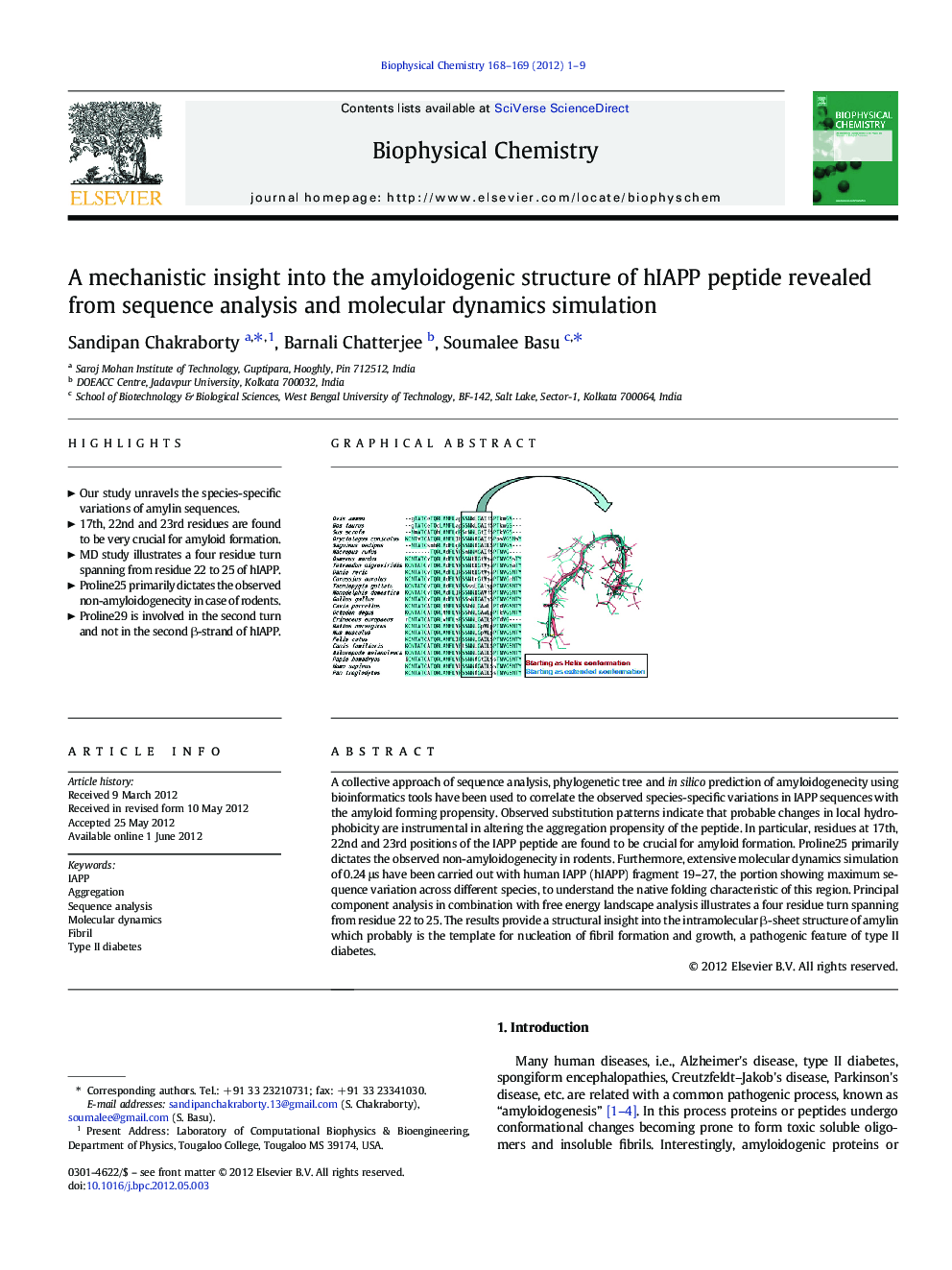| Article ID | Journal | Published Year | Pages | File Type |
|---|---|---|---|---|
| 5371200 | Biophysical Chemistry | 2012 | 9 Pages |
A collective approach of sequence analysis, phylogenetic tree and in silico prediction of amyloidogenecity using bioinformatics tools have been used to correlate the observed species-specific variations in IAPP sequences with the amyloid forming propensity. Observed substitution patterns indicate that probable changes in local hydrophobicity are instrumental in altering the aggregation propensity of the peptide. In particular, residues at 17th, 22nd and 23rd positions of the IAPP peptide are found to be crucial for amyloid formation. Proline25 primarily dictates the observed non-amyloidogenecity in rodents. Furthermore, extensive molecular dynamics simulation of 0.24 μs have been carried out with human IAPP (hIAPP) fragment 19-27, the portion showing maximum sequence variation across different species, to understand the native folding characteristic of this region. Principal component analysis in combination with free energy landscape analysis illustrates a four residue turn spanning from residue 22 to 25. The results provide a structural insight into the intramolecular β-sheet structure of amylin which probably is the template for nucleation of fibril formation and growth, a pathogenic feature of type II diabetes.
Graphical abstractDownload full-size imageHighlights⺠Our study unravels the species-specific variations of amylin sequences. ⺠17th, 22nd and 23rd residues are found to be very crucial for amyloid formation. ⺠MD study illustrates a four residue turn spanning from residue 22 to 25 of hIAPP. ⺠Proline25 primarily dictates the observed non-amyloidogenecity in case of rodents. ⺠Proline29 is involved in the second turn and not in the second β-strand of hIAPP.
